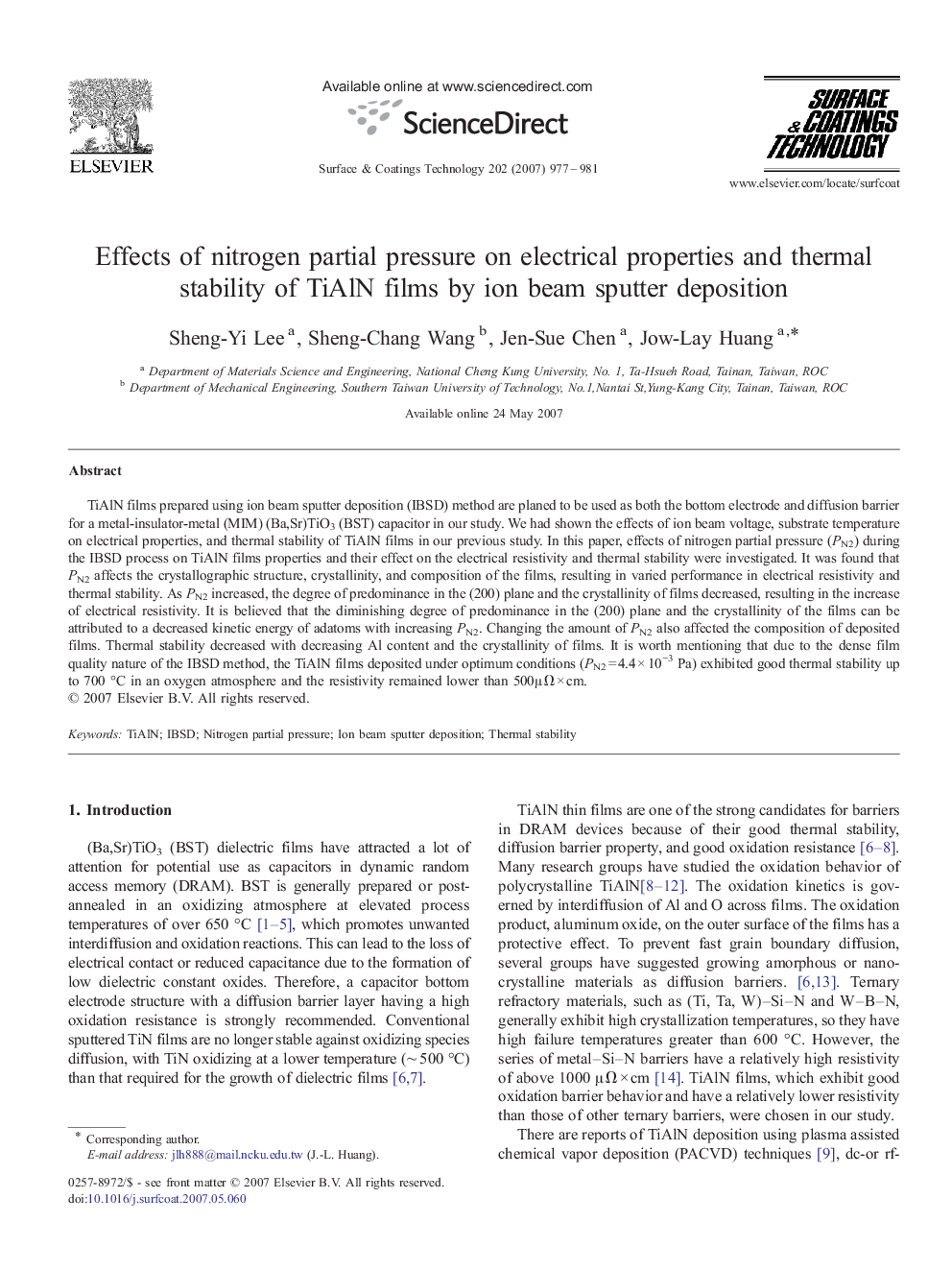| Article ID | Journal | Published Year | Pages | File Type |
|---|---|---|---|---|
| 1661699 | Surface and Coatings Technology | 2007 | 5 Pages |
TiAlN films prepared using ion beam sputter deposition (IBSD) method are planed to be used as both the bottom electrode and diffusion barrier for a metal-insulator-metal (MIM) (Ba,Sr)TiO3 (BST) capacitor in our study. We had shown the effects of ion beam voltage, substrate temperature on electrical properties, and thermal stability of TiAlN films in our previous study. In this paper, effects of nitrogen partial pressure (PN2) during the IBSD process on TiAlN films properties and their effect on the electrical resistivity and thermal stability were investigated. It was found that PN2 affects the crystallographic structure, crystallinity, and composition of the films, resulting in varied performance in electrical resistivity and thermal stability. As PN2 increased, the degree of predominance in the (200) plane and the crystallinity of films decreased, resulting in the increase of electrical resistivity. It is believed that the diminishing degree of predominance in the (200) plane and the crystallinity of the films can be attributed to a decreased kinetic energy of adatoms with increasing PN2. Changing the amount of PN2 also affected the composition of deposited films. Thermal stability decreased with decreasing Al content and the crystallinity of films. It is worth mentioning that due to the dense film quality nature of the IBSD method, the TiAlN films deposited under optimum conditions (PN2 = 4.4 × 10−3 Pa) exhibited good thermal stability up to 700 °C in an oxygen atmosphere and the resistivity remained lower than 500μΩ × cm.
